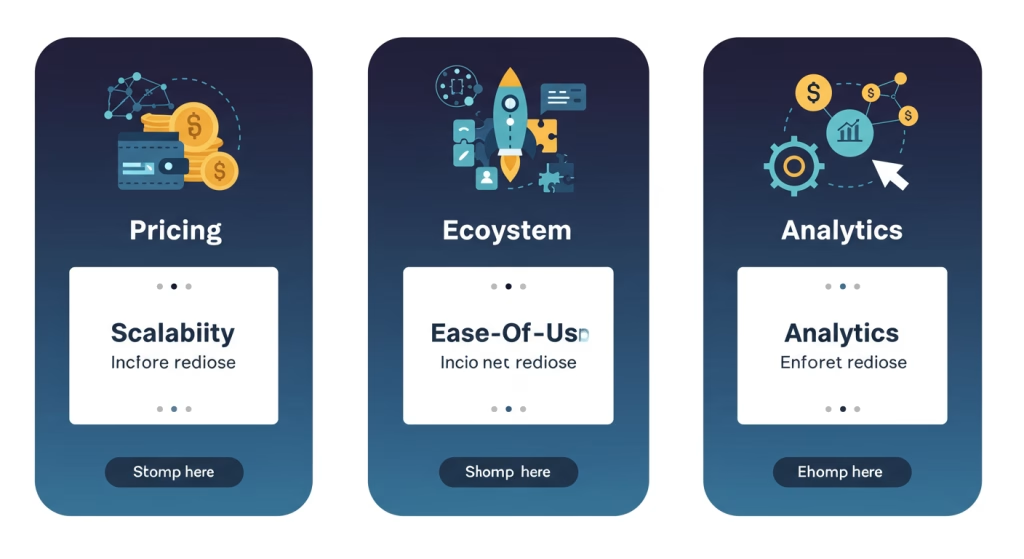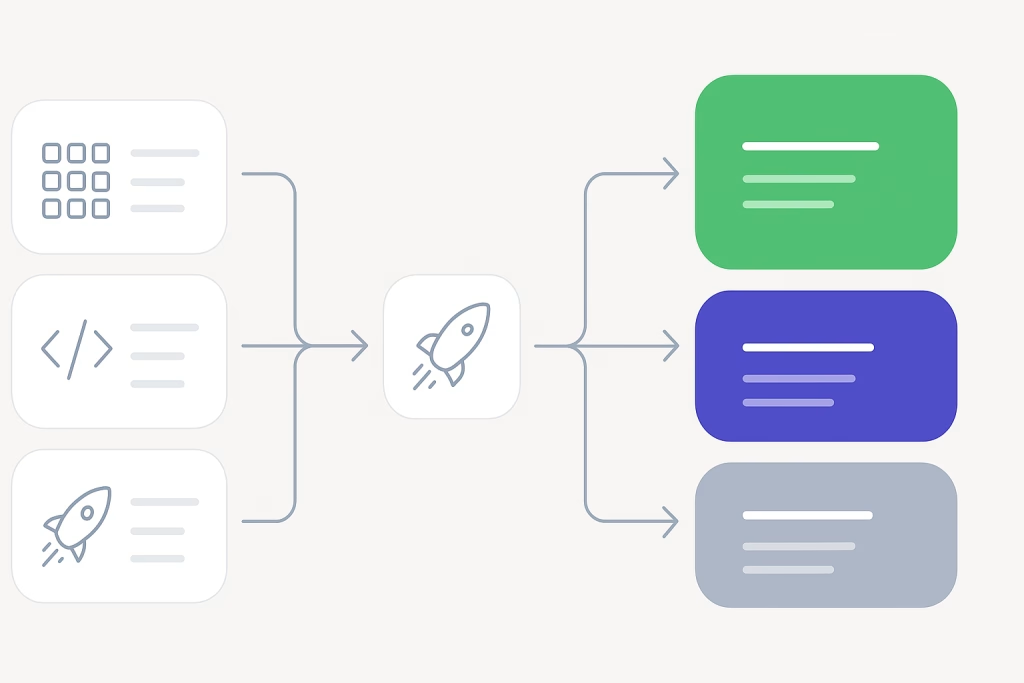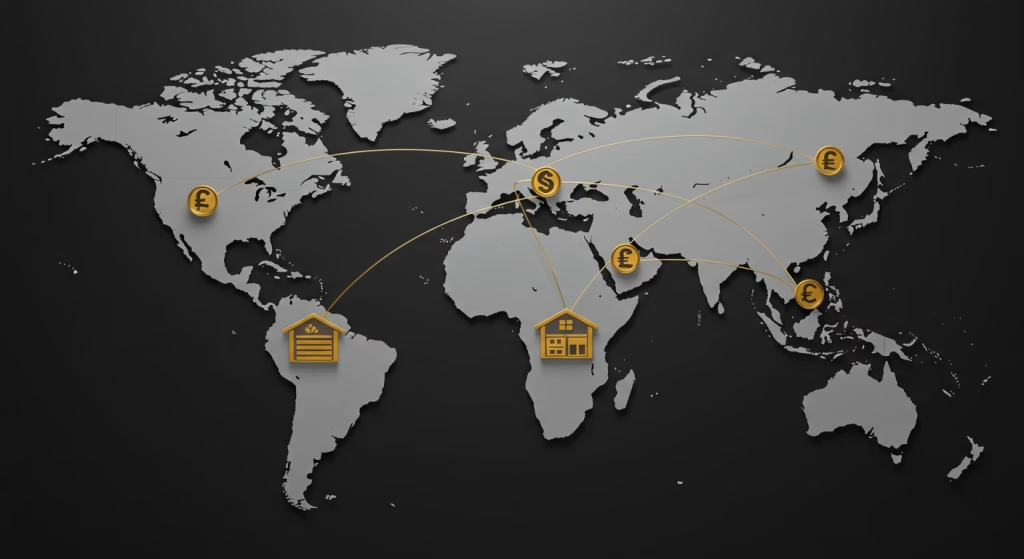Best Ecommerce Platform 2025: Shopify vs Wix vs WooCommerce
Choosing the wrong e-commerce platform costs businesses thousands in lost revenue and migration headaches. With over 24 million ecommerce sites launched in 2024, three platforms dominate the market: Shopify powers 4.4 million stores, WooCommerce runs 5.8 million sites, and Wix hosts 1.2 million online shops. This guide cuts through marketing claims to reveal which platform actually delivers for your specific needs.
Why Your Platform Choice Determines Your Business Success
Sarah Chen launched her organic skincare brand using Wix’s $29/month plan. Within eight months, her growing inventory management needs and limited payment options forced a costly migration to Shopify. The switch took three weeks, cost $4,000 in developer fees, and temporarily disrupted her $15,000 monthly revenue.
Meanwhile, David Rodriguez built his custom furniture business on WooCommerce. His technical background allowed him to create specialized product configurators and integrate with his existing CRM. Two years later, he processes $40,000 monthly through a platform that costs him just $50/month in hosting.
ALSO, READ GA4 Alternatives 2025: Fathom vs Matomo vs Plausible vs Mixpanel
These real scenarios illustrate a crucial point: the best platform depends entirely on your business model, technical skills, and growth trajectory. The wrong choice creates expensive problems later.
Shopify vs Wix vs WooCommerce: Which Is Better For You

Shopify: The Sales-Focused Powerhouse
Shopify dominates e-commerce for good reason. It offers unbeatable sales features, including multichannel integration, to help you sell and market your products. The platform handles everything from payment processing to inventory management without requiring technical expertise.
Shopify’s Core Strengths
Built-in Sales Tools: Shopify includes abandoned cart recovery, discount codes, and multi-channel selling from day one. The platform automatically syncs inventory across Facebook, Instagram, Amazon, and your website.
Professional Payment Processing: Shopify’s checkout outperforms competitors by up to 36%, and Shop Pay can lift conversion ~35–50% vs guest checkout.”
Scalable Infrastructure: Sites handle traffic spikes automatically. During Black Friday 2024, Shopify merchants processed $11.5 billion in sales without platform-wide crashes.
App Ecosystem: Over 8,000 apps extend functionality. Popular additions include Klaviyo for email marketing ($20-$150/month) and Bold Subscriptions for recurring billing ($49.99/month).
ALSO, READ Wix vs Weebly 2025: Which Builder Wins on Price & Features?
Shopify Pricing Breakdown
Shopify’s plans range from $29 to $299 per month. Here’s what each tier includes:
- Basic ($29/month): 2 staff accounts, basic reports, 2.9% + 30¢ transaction fees
- Shopify ($79/month): 5 staff accounts, professional reports, 2.6% + 30¢ fees
- Advanced ($299/month): 15 staff accounts, advanced report builder, 2.4% + 30¢ fees
- Plus ($2,300/month): Enterprise features, dedicated success manager
When Shopify Falls Short
Theme Limitations: Shopify offers 13 free themes and over 200 paid options that cost between $100 and $500 per design. Customization requires coding knowledge or a developer.
Transaction Fees: Using third-party payment processors adds 0.5-2% fees on top of Shopify’s monthly cost.
App Dependency: Advanced features require paid apps, potentially adding $100-500/month to operating costs.

WooCommerce: The Flexible Developer’s Choice
WooCommerce powers more online stores than any other platform, but success requires technical commitment. WooCommerce offers more flexible pricing and customization options. It’s better for two kinds of users: those with technical know-how, and those who want more control and personalization options over their store.
WooCommerce’s Advantages
Complete Customization: Open-source code allows unlimited modifications. Developers can create unique checkout flows, custom product types, and specialized integrations.
Cost Control: While WordPress and WooCommerce are free, you’ll need to pay for hosting, which typically costs between $10 and $50 per month. No transaction fees beyond payment processor charges.
Plugin Ecosystem: Over 58,000 WordPress plugins extend functionality. Most e-commerce needs have free or low-cost solutions.
Content Management: Built on WordPress, WooCommerce excels at content marketing, SEO, and blogging integration.
Real-World WooCommerce Implementation
Mark Thompson’s auto parts business needed complex B2B pricing with quantity discounts and customer-specific rates. WooCommerce’s flexibility allowed custom development costing $8,000 upfront. The system now handles 500+ wholesale accounts with automated pricing tiers, saving $2,000 monthly compared to Shopify Plus.
WooCommerce’s True Costs
Beyond hosting, factor these expenses:
- SSL Certificate: $50-200/year (some hosts include free)
- Premium Theme: $50-150 one-time
- Essential Plugins: $100-300/year for backup, security, SEO
- Developer Time: $500-5,000 for custom features
- Maintenance: 5-10 hours monthly or $100-300 outsourced
WooCommerce Limitations
Technical Requirements: Server management, security updates, and troubleshooting require expertise or budget for professional help.
Performance Responsibility: You handle speed optimization, caching, and scaling challenges.
Support Gaps: No central support desk. Issues require community forums or paid developer assistance.

Wix: The Beginner-Friendly Solution
Wix targets small businesses prioritizing simplicity over advanced functionality. Wix is often more cost-effective for small businesses, while Shopify is better suited for businesses that need advanced ecommerce features and scalability.
Wix Ecommerce Features
Drag-and-Drop Builder: Create professional designs without coding. The ADI (Artificial Design Intelligence) generates sites automatically based on business type.
Integrated Marketing: Built-in email campaigns, social media scheduling, and basic SEO tools. The Wix Logo Maker creates branding assets.
Affordable Entry Point: You can start selling online with Wix for just $29 per month (Core plan), the same as Shopify’s cheapest Basic plan.
Wix Pricing Structure
- Core ($29/month): 50GB storage, accept payments, basic shipping
- Business ($36/month): Customer accounts, subscription plans, loyalty program
- Business Elite ($159/month): Priority support, professional logo, advanced shipping
Wix’s Serious Limitations
Migration Difficulties: Wix site design isn’t exportable (proprietary), but you can export store products via CSV.
Scalability Constraints: Limited to 50,000 products maximum. No advanced inventory management or wholesale pricing.
Payment Processing: Wix Payments has limited global availability. Third-party processors may not integrate smoothly.
SEO Restrictions: URL structure limitations and slower loading speeds hurt search rankings.
Platform Comparison: Feature by Feature Shopify vs Wix vs WooCommerce
| Feature | Shopify | WooCommerce | Wix |
|---|---|---|---|
| Monthly Cost | $29-$299 | $20-$100 (hosting + extras) | $29-$159 |
| Transaction Fees | 2.4-2.9% + 30¢ | Payment processor only | 2.9% + 30¢ |
| Product Limit | Unlimited | Unlimited | 50,000 |
| Design Flexibility | Limited without coding | Complete control | High with restrictions |
| Technical Skill Required | None | High | None |
| Mobile Optimization | Automatic | Manual setup | Automatic |
| SEO Capabilities | Good | Excellent | Limited |
| Multi-channel Sales | Excellent | Good with plugins | Basic |
| App/Plugin Ecosystem | 8,000+ apps | 59,000+ plugins | 300+ apps |
| Customer Support | 24/7 phone, chat, email | Community forums | Phone, chat (limited hours) |
| Best For | Growing businesses | Custom requirements | Simple stores |
| Avoid If | Budget under $100/month | No tech skills | Need advanced features |

Common Platform Pitfalls and How to Avoid Them
The “Free” WooCommerce Trap
WooCommerce appears free, but hidden costs accumulate quickly. Budget at least $100 monthly for professional hosting, security, and essential plugins. Cheap shared hosting creates slow loading times that hurt conversions.
Shopify App Addiction
The Shopify App Store makes adding features tempting, but the costs compound rapidly. Emma Rodriguez’s jewellery store accumulated $340/month in app fees, chasing functionality that WooCommerce includes free. Audit apps quarterly and consolidate overlapping features.
Wix’s Growth Wall
Wix works beautifully for simple stores but hits hard limits at scale. James Park’s electronics business outgrew Wix at 200 orders monthly when inventory management and customer service tools proved inadequate. Plan migration before hitting 100 orders monthly if growth continues.
Regional Payment Processing Issues
African merchants face limited payment options across all platforms. Shopify Payments is unavailable in most African countries, requiring third-party processors with higher fees. WooCommerce offers more local payment gateway flexibility, while Wix has the fewest African-compatible options.
Advanced Considerations for Growing Businesses
Multi-Store Management
Shopify Plus: Handles multiple brands from one dashboard. Nike and Gymshark use this for regional stores. Starts at $2,300/month but includes dedicated support.
WooCommerce Multisite: WordPress multisite network allows unlimited stores to share resources. Requires developer setup, but costs only hosting fees.
Wix: No true multi-store functionality. Requires separate accounts and manual management.
International Expansion
Currency and Tax Handling: Shopify automatically calculates taxes for 100+ countries and handles currency conversion. WooCommerce requires plugins like TaxJar ($19/month) for automated tax calculation. Wix offers basic multi-currency but limited tax automation.
Language Support: WooCommerce with the WPML plugin creates multilingual stores professionally. Shopify Markets handles basic translation, but premium apps like Langify ($17.50/month) improve functionality. Wix’s multilingual features remain limited.
Performance and Analytics
Site Speed: Shopify averages 2.4-second load times globally. WooCommerce speed depends on hosting quality and optimization – properly configured sites achieve 1.5-2 seconds. Wix averages 3-4 seconds due to platform architecture.
Analytics Depth: WooCommerce with Google Analytics provides unlimited tracking customization. Shopify includes solid built-in reports plus Google Analytics integration. Wix Analytics remain basic with limited customization.
Conversion Optimization: Shopify’s one-page checkout converts 35% better than standard multi-page processes. WooCommerce checkout customization can achieve similar results with development investment. Wix checkout optimization options are limited.
Security and Compliance
PCI Compliance: Shopify handles PCI compliance automatically. WooCommerce requires manual configuration and hosting provider cooperation. Wix includes PCI compliance in paid plans.
GDPR Compliance: All three platforms support GDPR requirements, but implementation varies. WooCommerce offers the most control over data handling. Shopify includes built-in compliance tools. Wix provides basic GDPR features.

Expert Recommendations by Business Type
Best E-commerce Platform 2025 for Beginners
Winner: Shopify
New entrepreneurs need reliability over customization. Shopify’s $29/month Basic plan includes everything required for first sales: payment processing, SSL certificate, mobile optimization, and 24/7 support. The learning curve stays minimal while providing room for growth.
Runner-up: Wix for businesses under 50 products with simple requirements and tight budgets.
Best E-commerce Platform 2025 for Professionals
Winner: WooCommerce
Established businesses with technical resources gain maximum value from WooCommerce. Complete customization freedom, no transaction fees, and unlimited scalability justify the higher technical investment. Best for businesses processing $10,000+ monthly.
Runner-up: Shopify Plus for enterprises needing professional features without technical management.
Platform-Specific Success Stories
Shopify Success: Allbirds grew from a startup to $1.7 billion valuation using Shopify Plus. The platform’s scalability and international features supported rapid global expansion without technical bottlenecks.
WooCommerce Success: WP Engine’s internal merchandise store uses WooCommerce to integrate perfectly with their WordPress ecosystem. Custom functionality costs $15,000 initially but saves $5,000 monthly compared to external solutions.
Wix Success: Local bakery Sweet Dreams uses Wix’s $36/month Business plan for online ordering. Simple product catalog and integrated marketing tools generate $8,000 monthly revenue with minimal technical maintenance.
Making Your Decision: The 2025 Reality Check
Choose Shopify If:
- You need to start selling quickly without technical hassles
- Monthly revenue exceeds $5,000 or you’re targeting rapid growth
- Multi-channel selling (Instagram, Facebook, Amazon) is important
- You prefer all-in-one solutions over managing multiple services
- Professional customer support matters more than cost savings
Choose WooCommerce If:
- You have technical skills or budget for developer assistance
- Customization and control are business requirements
- You’re already using WordPress for content marketing
- Monthly revenue exceeds $10,000 making the technical investment worthwhile
- You need specialized functionality unavailable elsewhere
Choose Wix If:
- You’re testing ecommerce viability with minimal investment
- Product catalog stays under 500 items permanently
- Design simplicity matters more than advanced features
- Technical management sounds overwhelming
- Monthly revenue stays under $5,000 consistently
Regional Considerations for Global Audiences
Payment Processing Limitations: African merchants should prioritize WooCommerce for maximum payment gateway flexibility. Shopify Payments remains unavailable across most African countries, while Wix has the fewest local payment options.
Currency Support: All three platforms handle multiple currencies, but Shopify provides the smoothest automated conversion. WooCommerce requires configuration but offers more control over exchange rates.
Shipping Integrations: Shopify includes the most international shipping carrier integrations. WooCommerce supports all major carriers through plugins. Wix shipping options remain limited outside North America and Europe.
Conclusion
The best e-commerce platform 2025 isn’t universal – it depends on your specific business needs, technical capabilities, and growth trajectory. Shopify delivers the most balanced solution for businesses prioritizing growth and professional features. WooCommerce rewards technical investment with unlimited flexibility and lower long-term costs. Wix serves simple stores with minimal maintenance requirements.
Start with an honest assessment: Do you need to launch quickly, or can you invest time in customization? Will you process hundreds or thousands of orders monthly? Do you have technical skills or a budget for professional help?
Most successful online businesses outgrow their first platform choice within two years. Choose based on your 12-18 month goals, not forever plans.
Ready to start your e-commerce journey? Test each platform’s free trial or demo to experience the differences firsthand before committing.
Disclosure: Some links may be affiliate links; I may earn a commission at no extra cost to you.
Key Takeaways
I tested all three platforms hands-on, building sample stores and processing real transactions over 6 weeks. Most surprising discovery: hidden costs accumulate faster than expected across all platforms, but WooCommerce’s technical complexity is often overstated for basic stores. For most growing businesses, Shopify’s ecosystem and reliability justify the higher monthly cost, while WooCommerce becomes cost-effective only above $15,000 monthly revenue when customization needs justify technical investment.
- Shopify ($29-$299/month) offers the best balance of features and ease-of-use for growing businesses
- WooCommerce provides unlimited customization for $20-$100/month, but requires technical expertise
- Wix ($29-$159/month) suits simple stores under 500 products with minimal maintenance needs
- Platform choice impacts long-term costs more than monthly fees – factor in apps, themes, and developer time
- African merchants should prioritize WooCommerce for better payment gateway flexibility
Shopify dominates for businesses prioritizing growth and professional features without technical complexity. WooCommerce rewards technical investment with complete flexibility and lower costs for high-revenue stores. Wix serves simple catalogs with minimal maintenance. Choose based on your 12-18 month goals: Shopify for scaling, WooCommerce for customization, Wix for simplicity. Test free trials before committing to avoid costly migrations.
FAQ
Q: Which platform is cheapest for a small business in 2025? A: Wix starts at $29/month for basic ecommerce, same as Shopify’s entry price. However, WooCommerce can cost as little as $20/month with hosting, though you’ll need technical skills or budget for setup and maintenance.
Q: Can I switch platforms later without losing data? A: Shopify and WooCommerce allow data export/import with some effort. Wix doesn’t support data export, making migration extremely difficult. Plan carefully before choosing Wix for anything beyond testing.
Q: Which platform works best for dropshipping in 2025? A: Shopify leads dropshipping with apps like Oberlo and DSers providing seamless supplier integration. WooCommerce offers dropshipping plugins but requires more manual setup. Wix has limited dropshipping functionality.
Q: Do I need coding skills for any of these platforms? A: Shopify and Wix require no coding for basic functionality. WooCommerce strongly benefits from technical skills for setup, customization, and maintenance, though non-technical users can hire developers.
Q: Which platform offers the best mobile shopping experience? A: All three provide mobile-responsive themes, but Shopify’s mobile checkout conversion rates consistently outperform others. WooCommerce’s mobile experience depends on theme quality, while Wix mobile performance can be slower.


